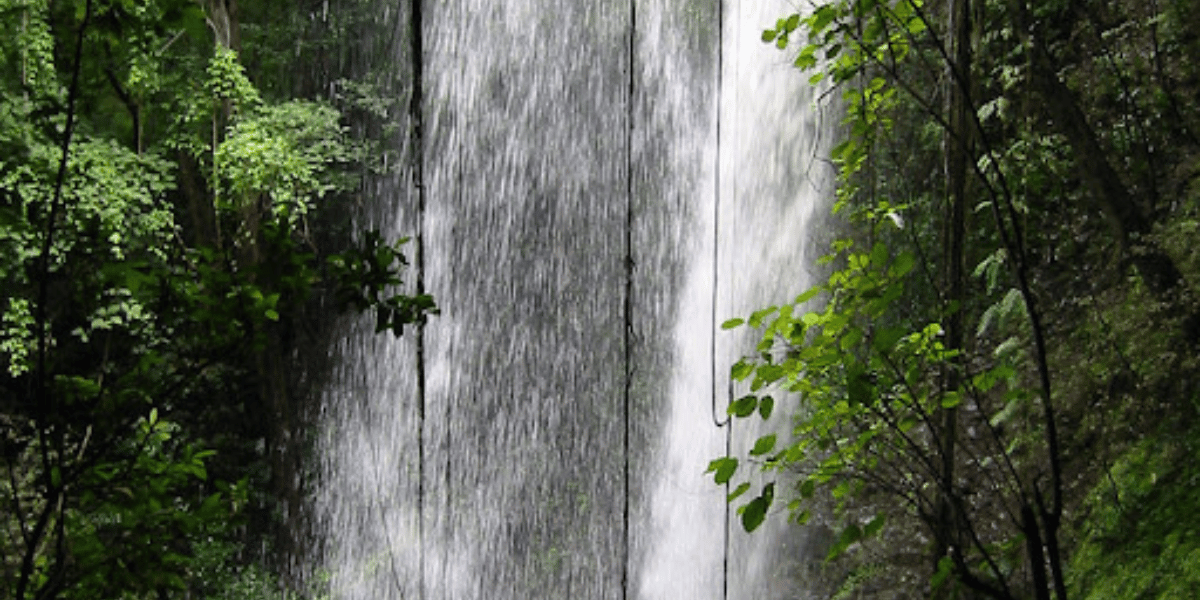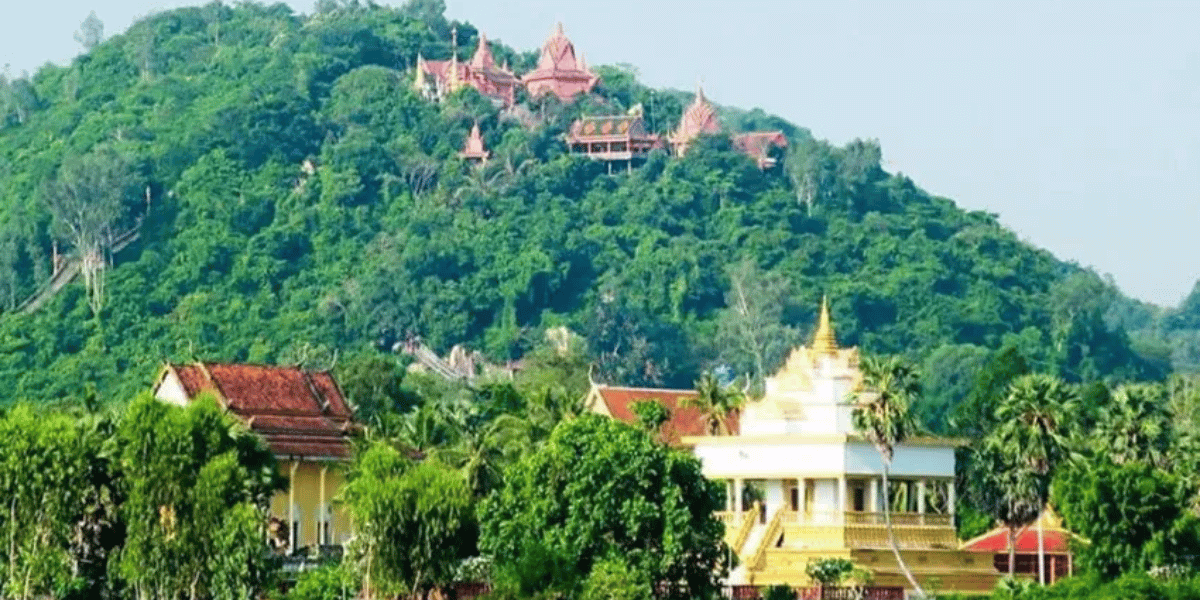Cambodia: A Unique Tourism Destination
Last Updated on 15 July, 2024 by admin
Nestled between Vietnam to the east and Laos to the north, Cambodia often evokes images similar to its neighbors; yet, it stands out with a distinct cultural and historical identity. Unlike Vietnam and Laos, Cambodia’s journey through time has been uniquely marked by its monumental architectures and a deeply rooted heritage that dates back to the powerful Khmer Empire. However, the path to becoming a tourism hotspot has been complex and fraught with challenges. For decades, the shadows of war and political turmoil overshadowed its potential as a tourist destination. It wasn’t until the late 20th century that Cambodia began to emerge from these shadows. The late blooming of its tourism sector can be attributed to these historical challenges, which significantly delayed development and global exposure. Now, as peace prevails and stability grows, Cambodia is fast becoming recognized not merely as an extension of a visit to its neighbors but as a rich and compelling destination in its own right. This new era invites travelers from around the world to explore its ancient wonders and vibrant culture, slowly unveiling a landscape that promises both adventure and profound historical insight.
Historical and Cultural Context
Cambodia’s history is steeped in both grandeur and tragedy, which has played a significant role in shaping its cultural and developmental landscape. Historically, the kingdom of Angkor, which flourished from the 9th to the 15th century, was one of Southeast Asia’s most significant civilizations, renowned for its breathtaking architectural achievements such as Angkor Wat and the Bayon Temple. However, the decline of Angkor marked the beginning of centuries of foreign domination and internal strife. The most devastating period came in the late 20th century when the Khmer Rouge regime, led by Pol Pot, inflicted a brutal genocide that decimated nearly a quarter of the population, severely hampering the nation’s developmental trajectory.
During the colonial era, Cambodia was a part of French Indochina, a factor that deeply influenced its architectural, culinary, and administrative frameworks more so than in its sister colonies, Vietnam and Laos. French influence is most visibly imprinted in the boulevards and colonial buildings of Phnom Penh and Battambang, which blend Khmer traditional designs with European styles. This period left a lasting impact on the Cambodian cultural psyche, intertwining local traditions with European influences.
Today, Cambodia’s political scene, while stable, is marked by its complexity. The country operates as a constitutional monarchy with an elected government, but the political landscape is often viewed as being under the tight control of the ruling Cambodian People’s Party and its long-standing leader, Hun Sen. Despite criticisms regarding democratic processes and human rights issues, this stability has allowed Cambodia to develop economically and improve its standing on the international stage. This political stability, coupled with efforts to reconcile its turbulent past, has been crucial in fostering a safe and welcoming environment for tourists, thereby enabling the country to explore and expand its tourism potential further.
Tourism Infrastructure
Cambodia’s tourism infrastructure, crucial for its growth as a popular travel destination, presents a mixed picture of development and challenges that reflect both its historical setbacks and its strides towards modernization.
Air Travel Limitations: Following the dissolution of Royal Air Cambodge, Cambodia’s national airline, in the early 2000s due to severe financial difficulties, the country’s air connectivity suffered a significant blow. This collapse left a vacuum that has only been partially filled by foreign carriers and the emergence of new local airlines such as Cambodia Angkor Air. The limited number of international flights directly impacts the ease with which tourists can enter the country, often necessitating stopovers in neighboring countries. This situation underscores the need for a robust strategy to enhance air traffic capabilities and infrastructure to improve direct global access, thereby boosting tourism.
Rail System Conditions: The Cambodian rail system, originally built during the French colonial era, has languished from decades of neglect and war. Recently, efforts have been made to rehabilitate some lines for cargo and limited passenger service; however, the network remains sparse and the trains slow. For tourists, the rail system is often deemed impractical not only because of the limited destinations and infrequent schedules but also due to the slow pace of travel, which does not align with the needs of time-sensitive tourists looking to maximize their vacation experiences.
Road Network Overview: In contrast to the rail system, Cambodia’s road network has seen substantial improvements and expansion in recent years. The roads, particularly the major highways connecting key cities like Phnom Penh, Siem Reap, and Sihanoukville, are generally in good condition and compare favorably with those in neighboring countries. These developments have facilitated easier and more flexible travel options within the country, including bus and private vehicle travel, making road transport a preferred choice for both locals and tourists.
Government Efforts to Reduce Corruption: Post-entry into the World Trade Organization (WTO), the Cambodian government has launched several initiatives aimed at curbing corruption, which had previously been a significant deterrent to foreign investment, including in the tourism sector. Measures such as the establishment of anti-corruption bodies and the implementation of more stringent laws and regulations to improve transparency and accountability are critical. These efforts are vital for creating a more business-friendly environment that can attract further investments into tourism infrastructure like hotels, resorts, and other tourist services.
These various elements of Cambodia’s tourism infrastructure collectively highlight both the progress made and the areas where continued focus is necessary. By improving air connectivity, enhancing the practicality of its rail systems, maintaining and expanding its road network, and steadfastly reducing corruption, Cambodia can significantly elevate its standing as a premier tourist destination in Southeast Asia.
Cambodia’s Major Tourist Attractions
Angkor Temple Complex: The Angkor Temple complex, a UNESCO World Heritage site located near Siem Reap, is undoubtedly the crown jewel of Cambodia’s tourist attractions. This sprawling site was the center of the Khmer Empire from the 9th to the 15th century and represents an incredible array of over 1,000 temples, the most famous being Angkor Wat. Angkor Wat itself is the largest religious monument in the world and an architectural masterpiece, known for its grand scale and exquisite detail. The complex reflects the sophisticated hydraulic systems and urban planning of the Khmer Empire as well as the deep spiritual roots of the country, with temples dedicated to Hindu and Buddhist deities. The significance of Angkor goes beyond its visual beauty, serving as a symbol of Cambodian national pride and a reminder of the country’s rich cultural and historical heritage.
Phnom Penh’s Colonial Architecture and Cultural Revival: Phnom Penh, the capital city, offers a contrasting experience with its vibrant mix of history and modernity. The city is famed for its beautiful colonial architecture, remnants of the French colonial era, visible in buildings like the Royal Palace, the Silver Pagoda, and along the picturesque riverside promenade. In recent years, Phnom Penh has undergone a cultural revival, embracing both its past and present. This revival is evident in the bustling art scene, cafes, and restaurants that line the streets, alongside traditional markets like the Russian Market and Central Market where the old world charm is palpable. The city’s architecture and ongoing cultural revival make it a dynamic place where history meets contemporary life.
Peak Tourist Seasons and Crowd Management: Cambodia’s peak tourist seasons typically fall between November and February, when the weather is cooler and drier. During these months, major sites like the Angkor Temple complex and popular areas in Phnom Penh see a significant influx of tourists. Managing these crowds has become a crucial task for preserving the integrity of the historical sites and ensuring a positive experience for visitors. Strategies such as staggered entry times, the promotion of lesser-known sites within the complex, and improved visitor facilities have been implemented. Additionally, the encouragement of off-peak travel and the development of alternative attractions are part of broader efforts to distribute tourist traffic more evenly throughout the year.
These major attractions not only draw visitors but also play a critical role in Cambodia’s tourism economy, showcasing the country’s historical depth and ongoing cultural evolution. As tourism continues to grow, effective management and preservation of these sites remain a priority to sustain their appeal and significance for future generations.
Beyond the Beaten Path
Cambodia offers an array of lesser-known sites and attractions that provide visitors with a deeper and more intimate experience of the country’s diverse landscapes and cultures. These areas highlight Cambodia’s ecological and cultural richness beyond its major tourist hubs.
Tonle Sap Lake: Tonle Sap, Southeast Asia’s largest freshwater lake, is an ecological marvel due to its unique flow change of water direction twice a year, which enlarges and shrinks the lake dramatically between the dry and wet seasons. This natural phenomenon significantly impacts the local biodiversity and supports over three million people who live in floating villages around the lake. The communities here have adapted to a life intertwined with the lake’s rhythms, building schools, homes, and even farms on rafts. Visiting Tonle Sap provides insight into the sustainable fishing practices and the culturally rich, waterborne lifestyle that cannot be found anywhere else in the world.
Coastal Areas near Sihanoukville: The coast near Sihanoukville extends to the border with Vietnam and is dotted with pristine beaches that remain relatively untouched by the heavy footfall of mainstream tourism. Places like Kep and Kampot offer tranquil beach experiences and are famous for their laid-back atmosphere and scenic beauty, characterized by clear waters and white sands. These coastal areas are ideal for visitors looking to escape the more crowded tourist destinations and enjoy a more relaxed pace of life by the sea.
Wildlife and Cultural Experiences in Ratanakiri and Mondulkiri Provinces: In the northeastern part of Cambodia, the provinces of Ratanakiri and Mondulkiri are known for their lush landscapes, rich biodiversity, and vibrant indigenous cultures. These regions offer rugged adventures with opportunities for trekking through dense jungles, visiting remote waterfalls, and experiencing the lifestyles of local ethnic groups such as the Kreung and Pnong. The conservation areas and national parks here are home to a wide array of wildlife, offering chances to engage in eco-tourism and wildlife-spotting tours that are respectful of the natural environment and beneficial to local communities.
Irrawaddy Dolphins near Kratie: The stretch of the Mekong River near the town of Kratie offers a rare opportunity to see the endangered Irrawaddy dolphins. This section of the river has been designated as a protected area to help conserve the dolphin population. Boat tours are available, which allow visitors to observe these elusive creatures in their natural habitat while also enjoying the serene river landscape. Seeing the Irrawaddy dolphins is not only a highlight for wildlife enthusiasts but also supports conservation efforts and provides an economic boost to the local communities involved in these eco-friendly tours.
Exploring these lesser-known areas allows tourists to witness Cambodia’s natural and cultural landscapes that are often overshadowed by the more frequented sites. Each destination offers a unique glimpse into the country’s rich ecological diversity and cultural heritage, making them must-visit locations for those wanting to delve deeper into Cambodia’s hidden treasures.
Emerging Tourism Opportunities
As Cambodia continues to develop its tourism sector, significant potential exists in promoting its underexplored areas. These regions not only offer unique experiences to travelers but also present opportunities for sustainable development and conservation.
Potential in Promoting Underexplored Areas: Many parts of Cambodia remain relatively untouched by mass tourism, offering pristine natural environments and authentic cultural experiences. Areas such as the Cardamom Mountains, the Preah Vihear Temple, and the islands off the southern coast like Koh Rong and Koh Rong Samloem are prime examples. These places provide an alternative to the well-trodden paths around Angkor Wat and Phnom Penh, appealing particularly to those seeking adventure, solitude, or a deeper understanding of Cambodia’s natural and cultural landscapes. Promoting these areas not only helps distribute tourism revenues more evenly across the country but also aids in alleviating the environmental and social pressures on more popular sites.
Role of Sustainable and Eco-tourism: Sustainable and eco-tourism play crucial roles in the conservation of Cambodia’s natural resources and cultural heritage. By focusing on responsible travel practices, these forms of tourism encourage the preservation of the environment and support local communities. For instance, eco-lodges and community-based tourism initiatives in the northeastern provinces of Mondulkiri and Ratanakiri integrate visitors into their efforts to protect wildlife and forests. These initiatives often include local guides, who provide in-depth knowledge about the region’s ecology and cultural traditions, ensuring that visitors leave with a greater appreciation and understanding of the importance of these resources.
Additionally, sustainable tourism practices help educate tourists on the importance of conservation efforts, such as those aimed at protecting endangered species like the Irrawaddy dolphins in Kratie or the elephants in the Cardamom Mountains. These practices not only provide financial incentives for local communities to preserve their natural and cultural assets but also foster a tourism model that prioritizes long-term benefits over short-term gains.
By harnessing the potential of underexplored areas and committing to sustainable and eco-tourism, Cambodia can create a diverse and resilient tourism economy. This approach not only enhances the visitor experience but also plays a vital role in the overall sustainable development of the country, ensuring that its natural and cultural treasures are preserved for future generations.
Travel with Haivenu
Haivenu, a travel agency renowned for its dedication to crafting personalized travel experiences, offers a unique opportunity for tourists to explore Cambodia in depth, whether they wish to visit its major landmarks or venture into more remote and less-trodden paths.
Customized Tours to Major and Remote Destinations: Haivenu specializes in creating tailor-made itineraries that cater to the specific interests and needs of each traveler. Clients can choose to immerse themselves in the historic splendor of the Angkor Temple complex, experience the vibrant city life of Phnom Penh, or escape to the tranquil beaches of the southern coast. For the more adventurous, Haivenu arranges explorations into Cambodia’s remote areas like the Cardamom Mountains, where travelers can engage with untouched natural landscapes and indigenous cultures. Each tour is meticulously planned to ensure a seamless and enriching travel experience that goes beyond conventional sightseeing.
Specialist Guides and Logistical Arrangements: Understanding the importance of knowledgeable and experienced guides, Haivenu employs local specialists who are not only experts in their geographical areas but also possess deep insights into the cultural and historical contexts of the sites visited. These guides enhance the travel experience by providing in-depth commentary and facilitating meaningful interactions with local communities. In addition to expert guidance, Haivenu takes care of all logistical arrangements, including transportation, accommodations, and meals, ensuring comfort and convenience for all travelers. Whether it’s navigating the bustling streets of urban centers or the secluded paths of rural landscapes, Haivenu’s logistical support is designed to meet the highest standards.
Commitment to Quality Service: Haivenu’s commitment to quality service is evident in its attention to detail and customer-centric approach. This includes a guaranteed 24-hour response time to all client emails, ensuring that communication is swift and effective. The agency prides itself on providing personalized care throughout the travel experience, from the initial planning stages to the conclusion of the trip. This level of service not only builds trust but also ensures that each itinerary is perfectly aligned with the client’s expectations and preferences.
Traveling with Haivenu means embarking on a journey that is both authentic and exclusive, tailored to offer a deep dive into Cambodia’s rich tapestry of landscapes and legacies. With its expert guides, comprehensive logistical support, and unwavering dedication to customer satisfaction, Haivenu stands out as a premier choice for discerning travelers seeking a memorable and personalized Cambodian adventure.
Conclusion
Cambodia, with its intricate blend of history, culture, and natural beauty, is rapidly emerging as a captivating destination in Southeast Asia. Its rich cultural heritage, rooted in the ancient grandeur of the Khmer Empire and influenced by centuries of diverse historical events, offers an enchanting backdrop for all who visit. From the majestic temples of Angkor Wat to the vibrant streets of Phnom Penh and the serene landscapes of its rural provinces, Cambodia presents a tapestry of experiences that resonate with a wide array of interests and tastes.
Despite its historical significance and scenic splendors, much of Cambodia’s potential remains untapped, with vast areas still relatively untouched by the mainstream tourism industry. These lesser-known destinations offer not only solitude and beauty but also a chance to engage with Cambodia’s culture and people in a more intimate and meaningful manner. The coastal stretches, remote jungles, and hidden cultural gems are just waiting to be explored and appreciated.
Visitors are encouraged to venture beyond the well-trodden paths of major tourist sites. Exploring these off-the-beaten-path locations not only diversifies the tourism experience but also contributes to sustainable tourism practices that benefit local communities and preserve the natural and cultural heritage of the country.
As Cambodia continues to develop and open its doors to the world, it invites travelers to delve deeper into its heartlands, to experience the diversity and beauty that make this country truly unique. Whether you are seeking adventure, relaxation, cultural immersion, or historical exploration, Cambodia offers a rich, dynamic, and increasingly accessible travel landscape that promises unforgettable experiences.




